Comentarios / Preguntas (56)
![]() Enguehard escribió:
Enguehard escribió:
4 pelotes ne sont pas suffisantes, comme l'ont signalé de nombreux commentaires. il faudrait modifier la description.
05.12.2017 - 18:13DROPS Design respondió:
Bonjour Mme Enguehard, 200 g doivent suffire à la réalisation de ce châle, pensez à bien tricoter votre échantillon, lavez-le et bloquez le avant de le mesurer, et ajustez la taille des aiguilles en fonction de votre tension. Bon tricot!
06.12.2017 - 09:51
![]() Linda Daudin escribió:
Linda Daudin escribió:
Bonjour. je ne comprends pas "pas de mailles , sauter cette case". est ce que je ne tricote pas la maille mais celle d'après donc j'aurai une maille non tricotée ?
10.09.2017 - 16:27DROPS Design respondió:
Bonjour Mme Daudin, à la fin de A.5B, on diminue des mailles, au rang suivant, elles n'existent plus car elles ont été diminuées, tricotez le nombre de mailles indiqué sur le diagramme, sans prendre en compte les cases noires. Bon tricot!
11.09.2017 - 08:38
![]() Kate Flynn escribió:
Kate Flynn escribió:
Also as the pattern has no stocking stitch it would be better to give the tension for the pattern
27.06.2017 - 20:01DROPS Design respondió:
Dear Mrs Flynn, if your tension is correct in stocking stitch, you should be able to keep the same when working pattern. Happy knitting!
28.06.2017 - 08:23
![]() Kate Flynn escribió:
Kate Flynn escribió:
I know all about gauge thank you and my gauge or tension as we call it is fine. I have been knitting for 40 plus years and never have a problem with my guage
27.06.2017 - 19:59
![]() Kate Flynn escribió:
Kate Flynn escribió:
I bought 4 balls of the yarn as stated and I do not have enough to finish pattern am not happy
26.06.2017 - 22:14DROPS Design respondió:
Dear Kate! Sorry to hear that you have run out of yarn, before you could finish the piece. This happens, when the piece is knitted with a different gauge, than given in the pattern. If you have limited amount of yarn, it is extremely important to make (and wash and check) a gauge swatch, and change needles accordingly, and keep the tension even and appropriate through the piece, Happy Knitting!
27.06.2017 - 01:40
![]() Charline Metcalfe escribió:
Charline Metcalfe escribió:
Thank you! I am used to seeing the amount of yarn needed in yardage and not in weight. That's what I was looking for. A lesson learned for the future.
15.05.2017 - 14:29
![]() Charline Metcalfe escribió:
Charline Metcalfe escribió:
How much yarn is required to make this shawl? I cannot find it in the pattern. How do I know how much yarn to order?
15.05.2017 - 08:31DROPS Design respondió:
Dear Mrs Metcalfe, you will find total amount of yarn required under tab "Materials" tog with measurements and needle sizes: 200 g DROPS Alpaca / 50 g a ball Alpaca = 4 balls DROPS Alpaca are required for this shawl. Happy knitting!
15.05.2017 - 09:39
![]() RIBEYRON Christiane escribió:
RIBEYRON Christiane escribió:
Bonjour, J'ai commencé le châle, mais il faut tricoter la 1ère maille de chaque rang et je trouve que la bordure n'est pas jolie, pas régulière. Que me conseillez-vous ? De rajouter 1 maille de chaque côté pour la bordure ou bien d'ignorer la maille envers au début du rang envers et ainsi de ne pas tricoter la 1ère maille de chaque rang ? Merci pour votre réponse. Christiane
07.04.2017 - 20:12DROPS Design respondió:
Chere Christiane! Sur l'envers, la premiere et la derniere maille sont toujours mailles endroit. A vrai dire, le mailles lis sont mailles endroit et sur l'entroit, et sur l'envers. Verrez bien le diagramme avec la legende au dessus du diagramme. Bon tricot!
10.04.2017 - 23:47
![]() Wendie Ranner escribió:
Wendie Ranner escribió:
How do you knit the other side frill of the shawl.
01.04.2017 - 00:04DROPS Design respondió:
Dear Mrs Ranner, there is only one side with wave pattern, the shawl is worked as explained in the pattern. Happy knitting!
03.04.2017 - 08:52
![]() Wendie Ranner escribió:
Wendie Ranner escribió:
I knitted this shawl twice, first time I pull it out thinking I'd made mistake but its just the same. It only has the frill down one side without any instructions on how to knit the other frill or edge. Can you please help.
01.04.2017 - 00:02
Tender Kiss#tenderkissshawl |
|||||||||||||||||||||||||
 |
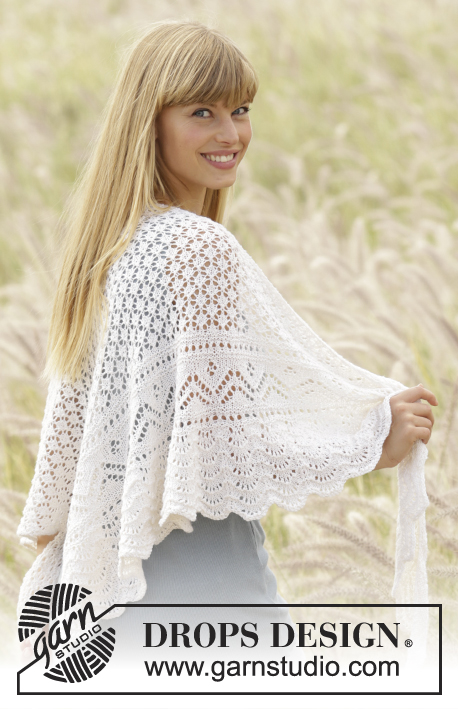 |
||||||||||||||||||||||||
Chal de punto DROPS con patrón de calados, tejido lateralmente, en “Alpaca”.
DROPS 169-13 |
|||||||||||||||||||||||||
|
PT MUSGO (de ida y vuelta): Tejer todas las hileras de derecho. 1 surco = 2 hileras tejidas de derecho. PATRÓN: Ver diagramas A.1 a A.5. Los diagramas muestran todas las hileras en el patrón vistas por el LD. TIP PARA AUMENTAR: Para calcular con qué frecuencia se deben hacer los aumentos, usar el número total de pts en la hilera (p.ej. 167 pts) y dividirlo entre el número de aumentos a ser hechos (4) = 41.75. Es decir, en este ejemplo, aumentar después de aprox cada 42º pt. NOTA: Aumentar 1 pt haciendo 1 HEB (lazada). En la hilera siguiente (= por el LR en A.3) tejer la HEB retorcida de derecho para evitar agujeros. ------------------------------------------------------ CHAL: La pieza es tejida de ida y vuelta en ag circular debido al número de pts – la pieza es tejida lateralmente. Montar 3 pts en ag circular tamaño 3.5 mm con Alpaca y tejer 1 hilera de derecho por el LR. Después tejer el patrón de ida y vuelta de acuerdo al diagrama A.1 y, AL MISMO TIEMPO, disminuir y aumentar como se muestra en el diagrama. RECORDARSE DE MANTENER LA MISMA TENSIÓN DE TEJIDO DE LA MUESTRA! Cuando A.1 ha sido tejido 1 vez verticalmente, hay 35 pts en la ag. Después repetir A.1B (= 12 hileras) hasta tener 161 pts en la ag. Tejer la hilera siguiente, de la manera siguiente, por el LD: Tejer A.2 (= 1 pt), repetir A.3A hasta que resten 4 pts en la ag y terminar con A.3B (= 4 pts). Continuar el patrón de esta manera y aumentar AL MISMO TIEMPO 4 pts distribuidos equitativamente en la última hilera por el LD – LEER TIP PARA AUMENTAR = 171 pts en la ag. Cuando A.3 ha sido tejido 1 vez verticalmente, tejer la hilera siguiente, de la manera siguiente, por el LD: Continuar A.2 sobre el pt más externo, repetir A.4A sobre los 168 pts siguientes (= 14 repeticiones de 12 pts) y terminar con A.4B (= 2 pts). Cuando A.4 ha sido tejido 1 vez verticalmente, hay 181 pts en la ag. Tejer la hilera siguiente, de la manera siguiente, por el LD: Continuar A.2 sobre el pt más externo, repetir A.3A hasta que resten 4 pts en la ag y terminar con A.3B (= 4 pts). Continuar el patrón de esta manera y aumentar AL MISMO TIEMPO 13 pts distribuidos equitativamente en la última hilera por el LD = 200 pts en la ag. Cuando A.3 ha sido tejido 1 vez verticalmente, tejer la hilera siguiente, de la manera siguiente, por el LD: Continuar A.2 sobre el pt más externo, repetir A.5A sobre los 198 pts siguientes (= 22 repeticiones de 9 pts) y terminar con A.5B (= 1 pt). Cuando A.5A ha sido tejido 1 vez verticalmente, hay 379 pts en la ag. Después tejer A.5C sobre A.5A (continuar el pt más externo y A.5B como antes). Cuando 6 “ondas” en total han sido tejidas verticalmente (es decir, cuando A.5B ha sido tejido), hay 394 pts en la ag. Tejer 1 hilera de derecho por el LD con aumentos al final de la hilera como antes. Después rematar FLOJO de derecho por el LR. Humedecer la pieza y colocarla para darle la forma a las dimensiones correctas. |
|||||||||||||||||||||||||
Explicaciones del diagrama |
|||||||||||||||||||||||||
|
|||||||||||||||||||||||||
 |
|||||||||||||||||||||||||
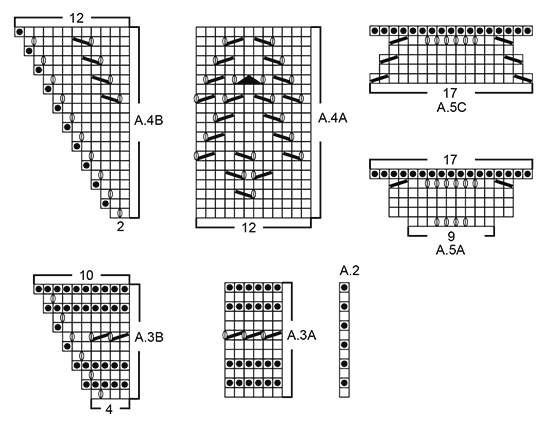 |
|||||||||||||||||||||||||
¿Terminaste este patrón?Entonces, etiqueta tus fotos con #dropspattern #tenderkissshawl o envíalas a la galería #dropsfan. ¿Necesitas ayuda con este patrón?Encontrarás 17 videos tutoriales, un espacio para comentarios/preguntas y más visitando la página del patrón en garnstudio.com © 1982-2025 DROPS Design A/S. Todos los derechos reservados. Este documento, incluyendo todas sus sub-secciones, está protegido por los derechos de autor (copyright). Lee más acerca de lo que puedes hacer con nuestros patrones en la parte de abajo de cada patrón de nuestro sitio. |
|||||||||||||||||||||||||







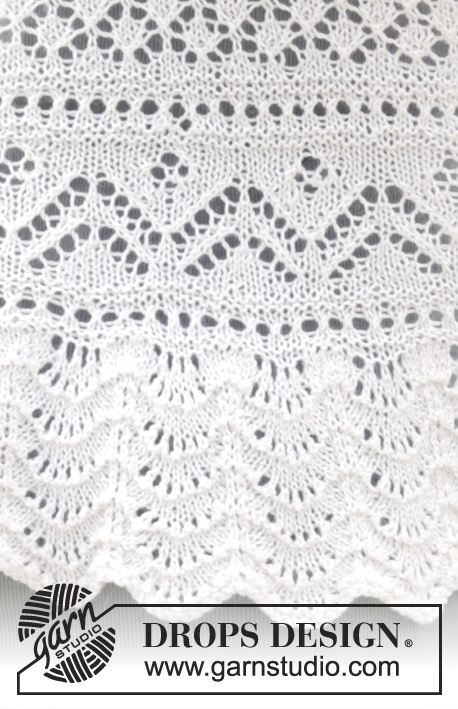

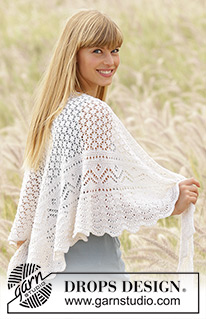
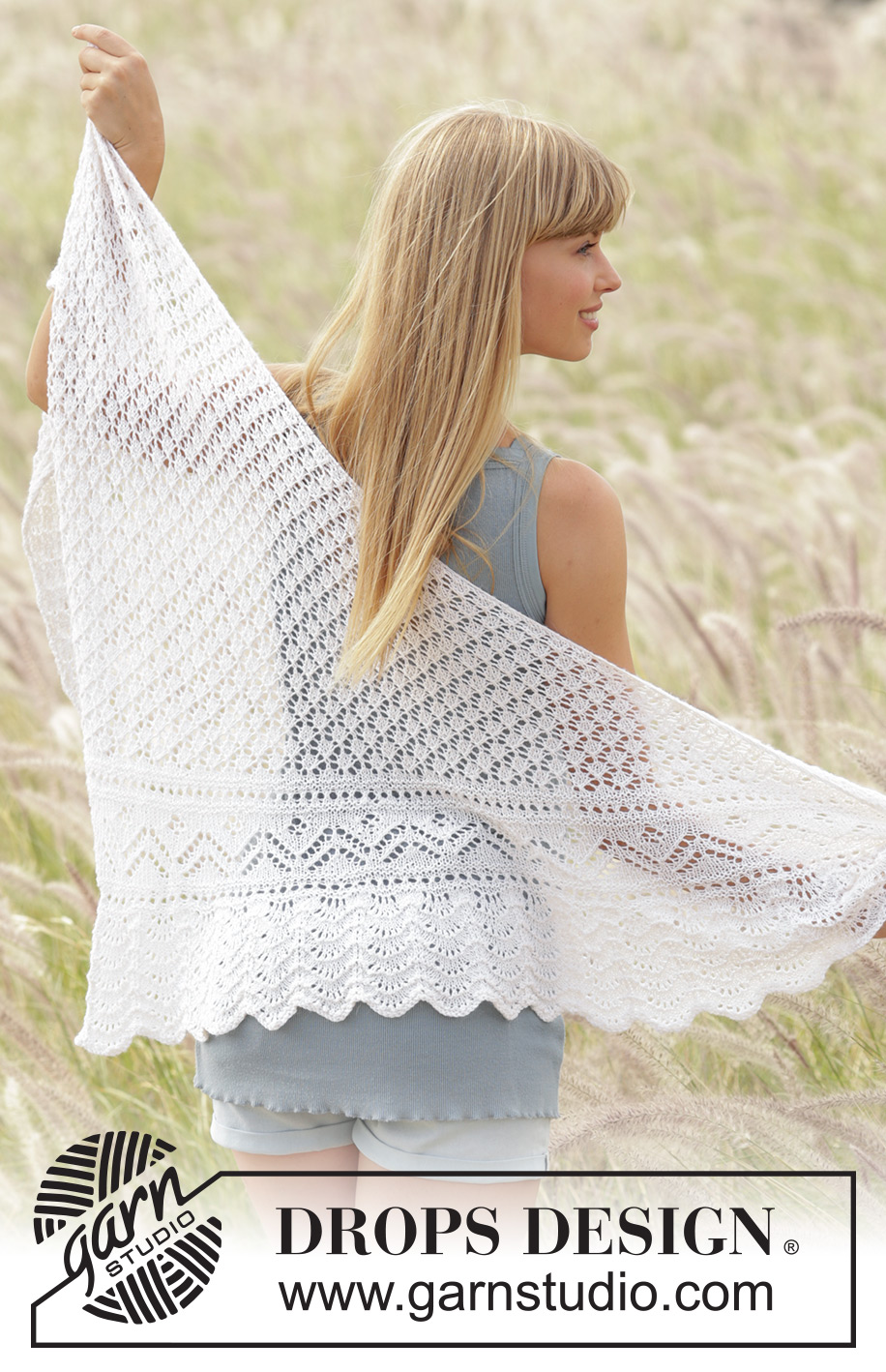




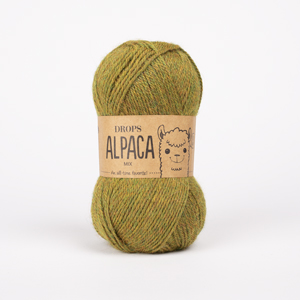



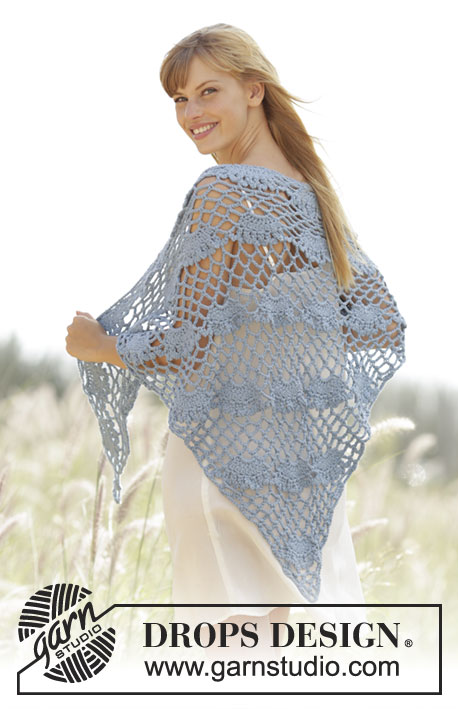
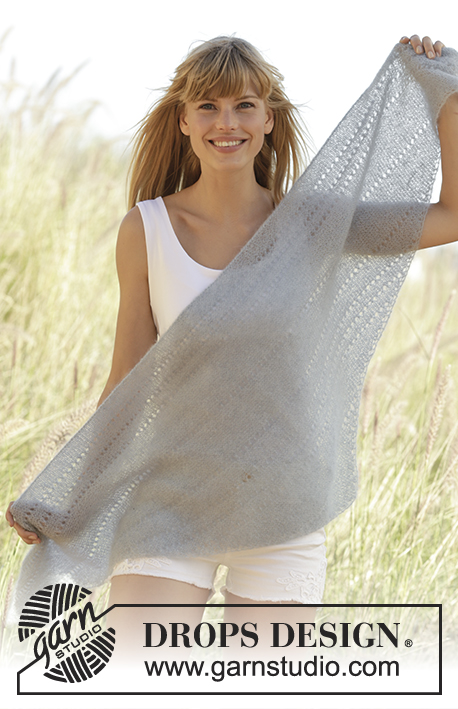






































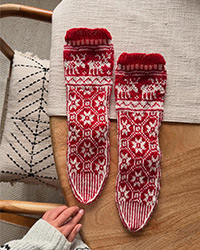

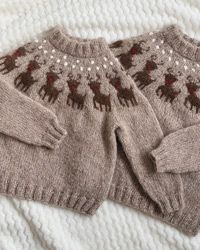

Escribe un comentario sobre DROPS 169-13
¡Nos encantaría saber qué piensas acerca de este patrón!
Si quieres escribir una pregunta referente al patrón, por favor asegúrate de elegir la categoría correcta en el formulario debajo, para acelerar el proceso de respuesta. Los campos obligatorios están marcados con un *.